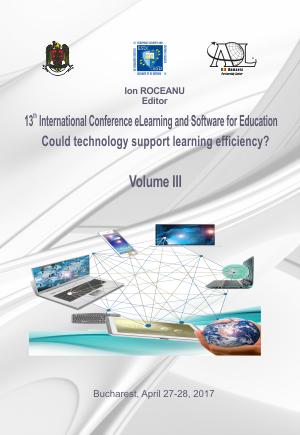SPORTS SCIENCE QUALITY FRAMEWORKS IN BLENDED LEARNING IN SERBIA
SPORTS SCIENCE QUALITY FRAMEWORKS IN BLENDED LEARNING IN SERBIA
Author(s): Danica Pirsl, Nadežda M. Stojković, Tea PIRSLSubject(s): Social Sciences
Published by: Carol I National Defence University Publishing House
Keywords: blended learning; quality framework; sports sciences; learning effectiveness; MA students.
Summary/Abstract: Blended learning in higher education requires the quality framework created by any given faculty dedicated to one and only aim: integration of online education into the mainstream of higher education, in our case sports second cycle master education. At the Faculty of sport in Nis, Serbia, it was established to assess online and blended learning (Lorenzo & Moore, 2002; Laumakis, Graham, & Dziuban, 2009). This framework comprises five parameters: learning effectiveness, student satisfaction, faculty satisfaction, cost effectiveness, and access (Lorenzo & Moore, 2002). Measuring sports students' progress and learning effectiveness showed 82% satisfaction with their learning and teaching experience. Conventional mode encompassed 120 sports students at the master level last year (2016). This year, 2016, the Faculty enrolled 90 students opting for a distance learning mode, making it 75% of the total students' body. As for the cost effectiveness, the tuition is the same for both modes of learning, but specifics of students body says they rather choose e-learning due to their sporting engagements abroad (most of them being highly successful renowned coaches). Finally, access included administrative and technical infrastructure and learner support services which allowed access to all learners. Namely, the purpose of the study is the description of the learning environment which includes assessment of learning outcomes as a way to demonstrate learning effectiveness. The sports sciences courses are designed to teach students at the Faculty of sport in Nis how to apply their generic and sports specific skills so as to be able to run all sports related jobs. There are six parameters in the framework: 1) mode, 2) model of integration, 3) distribution of learning content and objectives, 4) sports sciences teaching methods, 5) involvement of learning subjects (students, tutors, and teachers), and 6) location. The mode which guides learners and where they spend most of the time is called the lead mode. Sequencing and negotiation of content is also done in the lead mode. The modes are further divided into components or sub-modes (for example, different teaching methodologies in the face-to-face mode or synchronous and asynchronous communication). Neumeier finds the second parameter, model of integration, very important. Overall, integration is related to the obligatory or optional nature of activities, (at the Faculty of sport in Nis, we follow the Bologna model requiring pre and exam related activities). Moreover, level of integration is connected to sequencing of modes which can be alternating, parallel, or overlapping, to name just a few. For example, the face-to-face mode can alternate with a sub-mode (such as message board) or the message board can be available throughout the course parallel to the other sub-modes. A decision on how to sequence activities could be based on the degree of transactional distance defined as the "physical distance that leads to a communication gap" (Moore & Kearsley, 1996, p.203). Neumeier gives an example of a blended model where an activity with a low degree of transactional difference, a group face to-face discussion, was scheduled after individual work on a CD-ROM, covering for example ski techniques, with a little collaborative character. Parameter three, distribution of learning content and objectives, can be implemented in two ways: parallel or isolated. Parallel distribution allows a certain skill to be incorporated and practiced in both modes. Sports teaching methods, parameter four, are influenced by online materials, the online tutor, and the face-to-face teacher. Involvement of learning subjects, parameter five, refers to types of interaction that can take place in the blended environment. Maybe, at this point we should add a note that, according to the Serbian law on higher education, in a distance learning mode, exams are to be taken at the Faculty's premises, requiring thus students' physical presence. In addition to two major interaction patterns, human-to human and human-to-computer, there are a number of variations (for example, student-to student through computer, solving a joint task). Another descriptor of this parameter is teacher and learner roles. In the blended environment both teachers and students assume new roles so teachers can become online tutors and students more autonomous learners. The final parameter, location, refers to the physical space were learning takes place. In addition to traditional locations such as classroom and home, new technologies can allow for learning to take place elsewhere, for example, in a virtual space measuring ideal athletes' performances and thus setting standards, or using virtual force platforms in teaching biomechanics of human movement patterns.
Journal: Conference proceedings of »eLearning and Software for Education« (eLSE)
- Issue Year: 13/2017
- Issue No: 01
- Page Range: 188-193
- Page Count: 6
- Language: English

